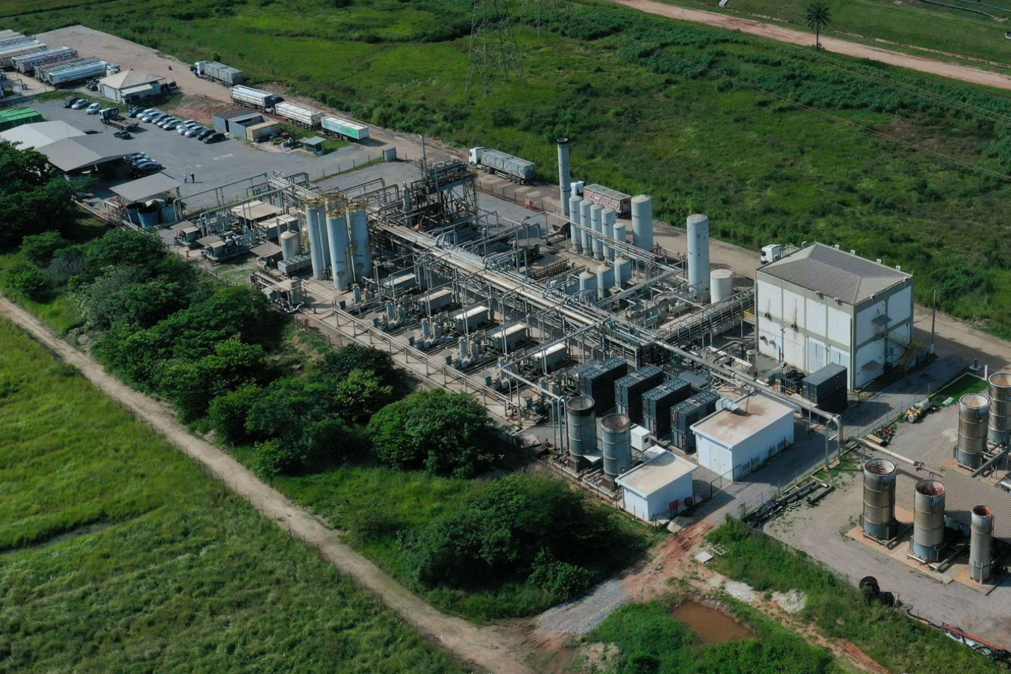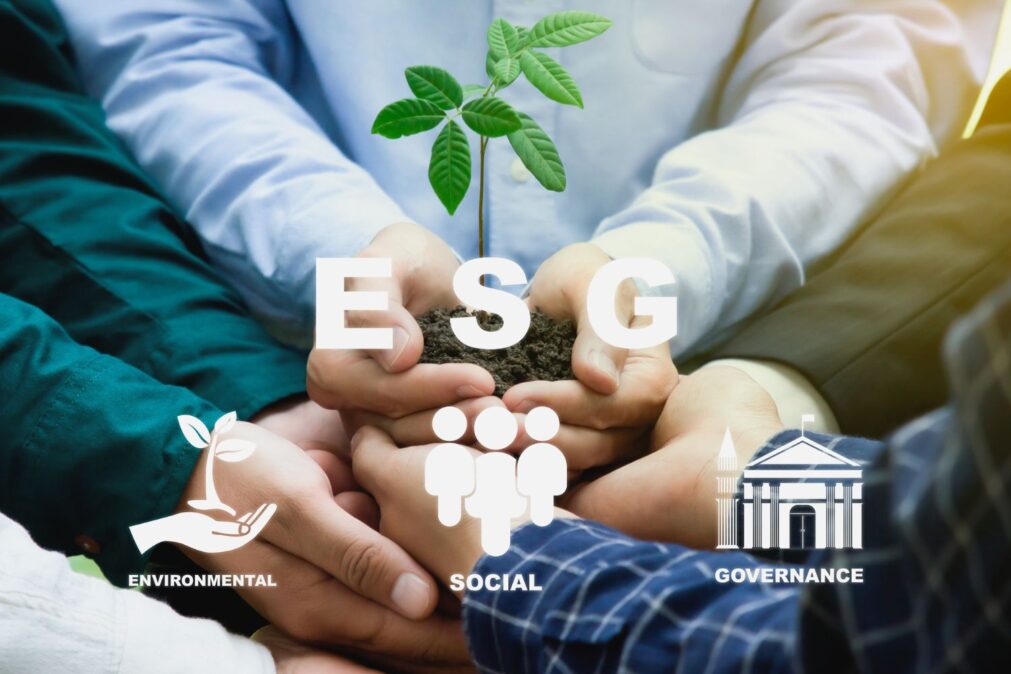Main Greenhouse Gases and Their Impacts
Greenhouse gases (GHGs) are gaseous components that contribute to the greenhouse effect, a natural phenomenon that keeps the Earth’s temperature habitable. However, the excessive concentration of these gases in the atmosphere, mainly resulting from human activities, has intensified global warming, leading to significant climate changes.
The main GHGs include carbon dioxide (CO2), methane (CH4), nitrous oxide (N2O), and fluorinated gases (hydrofluorocarbons, perfluorocarbons, sulfur hexafluoride, and nitrogen trifluoride). Each of these gases has a different global warming potential (GWP), measured in relation to CO2, which is used as a reference.
Carbon Dioxide (CO2): It is the primary GHG, responsible for about 76% of global GHG emissions. Its main source is the burning of fossil fuels (coal, oil, and natural gas) for energy and transportation, in addition to deforestation, which reduces the CO2 absorption capacity of forests.
Methane (CH4): Although present in smaller amounts than CO2, CH4 is about 25 times more potent in terms of GWP over a 100-year horizon. Its main sources include the production and transport of coal, natural gas, and oil, as well as enteric fermentation from ruminants in agriculture and waste in landfills.
Nitrous Oxide (N2O): With a GWP about 298 times greater than that of CO2, it is primarily generated by agriculture, especially by the use of nitrogenous fertilizers, biomass burning, and burning of fossil fuels.
Fluorinated Gases: Although they represent a small fraction of total emissions, they have significantly high GWPs. They are used in a variety of industrial applications, including refrigerants, solvents, and in the production of foams and aerosols.
The impact of these gases on global warming is measured by their GWP, which considers each gas’s ability to absorb energy and retain heat in the atmosphere, in addition to its atmospheric persistence. The increase in the concentration of these gases intensifies the greenhouse effect, raising global temperature, altering climate patterns, and accelerating the melting of polar ice caps and glaciers, sea-level rise, and extreme weather events.
Measuring Greenhouse Gases
Measuring greenhouse gases is crucial to understanding the extent of global warming and formulating effective mitigation strategies. There are various methodologies and technologies employed to monitor and quantify these gas emissions, both at local and global levels. This section explores the main measurement methods, the challenges faced, and the institutions involved in this essential process.
Direct and Indirect Measurement Methods
Direct Measurement: Direct measurement of GHGs involves collecting air samples and analyzing them in the laboratory to determine the concentration of specific gases. Ground-based monitoring stations, such as the Global Atmosphere Watch (GAW) network of the World Meteorological Organization (WMO), are fundamental in this regard. These stations are strategically located around the world to collect representative data on the atmosphere’s composition.
Indirect Measurement: Indirect measurement uses mathematical models and emission inventories to estimate the amounts of GHGs released by different sources. Emission inventories are compiled by countries and organizations, following international guidelines, such as those provided by the Intergovernmental Panel on Climate Change (IPCC). They are based on activity data (e.g., amount of fuel burned, areas of land cultivated) and specific emission factors for different processes and fuels.
Advanced Measurement Technologies
Satellites: Satellites play a crucial role in measuring GHGs on a global scale, offering a comprehensive view of these gases’ distribution and concentration in the Earth’s atmosphere. Instruments like NASA’s Orbiting Carbon Observatory (OCO-2) and the European Space Agency’s (ESA) Sentinel-5P satellite provide accurate data on CO2 and other GHG concentrations.
Remote Sensors: Remote sensors mounted on aircraft or drones offer the capability to perform detailed measurements over specific areas, allowing the identification of point sources of emissions, such as landfills, oil and gas production facilities, and large farms.
Challenges in GHG Measurement
Measuring GHGs faces several challenges, including the need for continuous global coverage, the standardization of measurement methods, and data interpretation against natural variability. Additionally, the accuracy of indirect estimates depends on the quality of activity data and the emission factors used, which can vary significantly between different regions and types of sources.
International Institutions and Agreements
Various international organizations, such as the WMO, IPCC, and ESA, play a key role in measuring GHGs, providing guidelines, research funding, and data sharing. International agreements, like the Paris Agreement, also establish frameworks for countries to report their GHG emissions transparently and regularly, promoting accountability and facilitating the assessment of global progress towards emission reduction targets.
Accurate and comprehensive measurement of GHGs is essential to understand the impact of human activities on the climate and to inform mitigation policies and strategies. Measurement technologies and methodologies continue to evolve, improving our ability to respond to the challenges of climate change.
Greenhouse Gas Emission Sources
Understanding the sources of greenhouse gas (GHG) emissions is crucial for devising effective mitigation strategies. GHG emissions can be categorized into several main sources, including energy, agriculture, industry, transportation, and land use and forestry. This section details each of these sources, highlighting their contribution to global GHG emissions and the challenges associated with their reduction.
Energy
The production and consumption of energy represent the largest source of GHG emissions, contributing approximately two-thirds of global emissions. The burning of fossil fuels (coal, oil, and natural gas) for electricity generation, heating, and transportation is the primary activity responsible for these emissions. Transitioning to renewable energy sources (wind, solar, hydroelectric) and improving energy efficiency are key strategies for reducing emissions from the energy sector.
Agriculture
Agriculture accounts for a significant portion of global GHG emissions, mainly from methane (CH4) and nitrous oxide (N2O), stemming from enteric fermentation of ruminants, manure management, and application of nitrogenous fertilizers. Adopting sustainable agricultural practices, such as integrated nutrient management, conservation agriculture, and agroforestry systems, can significantly reduce emissions from this sector.
Industry
The industrial sector, including the manufacturing of products like steel, cement, and chemicals, is another significant source of CO2 and other GHG emissions. These emissions result mainly from energy consumption and specific industrial processes. Energy efficiency, the use of recycled materials, and carbon capture and storage (CCS) are important approaches to decrease industrial emissions.
Transportation
Transportation is one of the fastest-growing sectors in terms of GHG emissions, driven by increased demand for personal mobility and goods transport. Vehicles powered by fossil fuels are the main source of emissions in this sector. Electrifying transport, using alternative fuels like hydrogen and biofuels, and promoting low-carbon transportation modes (such as bicycles and public transport) are essential for reducing the environmental impact of transportation.
Land Use and Forestry
Changes in land use, including deforestation for agriculture and pasture, contribute to CO2 emissions, while forestry and other land management practices can act as carbon sinks. Sustainable forest management, reforestation, and preventing deforestation are crucial strategies for balancing CO2 emissions and removals in this sector.
Challenges in Emission Reduction
Reducing GHG emissions faces several challenges, including the need for technological transformation, changes in consumption patterns, and the implementation of effective public policies. Moreover, international cooperation is crucial, given that GHG emissions are a global problem requiring a global response.
GHG Emission Mitigation Strategies
Mitigating greenhouse gas (GHG) emissions is essential to combat climate change. There are various strategies that can be implemented across different sectors to reduce emissions. This section addresses some of the most effective approaches to GHG emission mitigation, highlighting practical examples and challenges associated with their implementation.
Energy Transition
Transitioning from fossil fuel-based energy sources to renewable sources is one of the most effective strategies for reducing CO2 emissions. Investments in solar, wind, hydroelectric, and geothermal energy can provide low-carbon electricity, significantly reducing emissions from the energy sector. Modernizing energy infrastructure and increasing energy efficiency in buildings and industries are also crucial. This transition faces challenges, including the initial implementation cost, the need for the development of smart electrical grids, and energy storage systems to handle the variability of renewable sources.
Sustainable Agricultural Practices
Adopting sustainable agricultural practices is crucial to mitigating greenhouse gas emissions and promoting a more resilient and environmentally responsible agricultural sector. One of these innovative practices includes the appropriate management of animal waste to capture methane and transform it into biogas and biomethane, renewable energy resources. This process not only reduces emissions of methane, a potent greenhouse gas, but also provides a clean, sustainable energy source.
Efficiency and Industrial Innovation
The industry can reduce its emissions through energy efficiency, process optimization, and the adoption of clean technologies. Carbon capture and storage (CCS) emerges as a promising technology for high-emission industries, such as steel and cement production. However, the economic viability and technical challenges of large-scale implementation remain significant barriers.
Sustainable Mobility
In the transportation sector, vehicle electrification, the development of alternative fuels like hydrogen and biofuels, and the promotion of low-emission transportation modes are key strategies. Additionally, urban planning that favors the use of bicycles and public transport can reduce reliance on personal vehicles. Challenges include the infrastructure for electric vehicle charging, the cost of low-emission vehicles, and the need for changes in the population’s mobility patterns.
Sustainable Forest and Land Management
Preserving and restoring forests, as well as promoting sustainable land use practices, are essential for sequestering CO2. Strategies include reforestation, preventing deforestation, and sustainable forest management. Challenges lie in land competition, property rights issues, and the need for economic incentives for conservation.
Challenges and Paths Forward
Implementing mitigation strategies faces economic, technological, and political challenges. Substantial investments are required, as well as political will to implement policies and regulations that encourage low-carbon practices. Additionally, international cooperation is crucial, given that GHG emissions are a global problem requiring a coordinated response.
The Role of International Policies in GHG Emission Management
International policies play a crucial role in managing greenhouse gas (GHG) emissions, establishing regulatory frameworks and incentives for global climate action. These agreements facilitate cooperation among countries, set emission reduction targets, and promote the development and transfer of clean technologies. This section explores the main international agreements, their impacts and challenges, and the importance of global cooperation in combating climate change.
Paris Agreement
The Paris Agreement, adopted in 2015 under the United Nations Framework Convention on Climate Change (UNFCCC), is a landmark in global climate governance. Its main goal is to limit the global temperature increase this century to well below 2°C above pre-industrial levels and to pursue efforts to limit the temperature increase to 1.5°C. To this end, countries commit to presenting and regularly updating their Nationally Determined Contributions (NDCs), which outline their emission reduction plans.
Challenges and Progress
Despite the commitments made under the Paris Agreement, the world is still far from reaching its goals. The implementation of NDCs faces challenges, including a lack of funding, technical capacity, and political will. Additionally, the need for climate justice and equity in climate action is critical, as less developed countries, which have contributed least to climate change, are often the most vulnerable to its effects.
Carbon Market Mechanisms
An important aspect of international GHG management policies is the development of carbon markets. These mechanisms allow countries or entities that reduce emissions beyond their targets to sell carbon credits to those struggling to meet their own goals. Article 6 of the Paris Agreement establishes the basis for such markets, promoting international cooperation and contributing to global emission reduction in a cost-effective manner.
Climate Financing
Climate financing is another fundamental pillar of international policies, facilitating the transition to low-carbon technologies and helping developing countries adapt to climate change. Initiatives like the Green Climate Fund (GCF) seek to mobilize funds from the private and public sectors for low-carbon and climate resilience projects in the most vulnerable countries.
Cooperation and Global Commitment
The effectiveness of international policies depends on the cooperation and commitment of all countries. Ambitious climate actions require collaboration between governments, the private sector, civil society, and local communities. Communication and the exchange of best practices are vital to amplify the impact of climate initiatives.
To achieve the goals set in international agreements and avoid the worst impacts of climate change, a significant increase in ambition and climate action is necessary. This includes strengthening NDCs, increasing climate financing, promoting equity in climate action, and investing in innovative and sustainable solutions.
International policies are fundamental in the fight against climate change, establishing the framework for global action. However, to transform commitments into effective actions, a concerted effort from all sectors of society is needed. The next decade is critical in determining the future of our planet’s climate, and international cooperation will be indispensable in ensuring a sustainable world for future generations.





